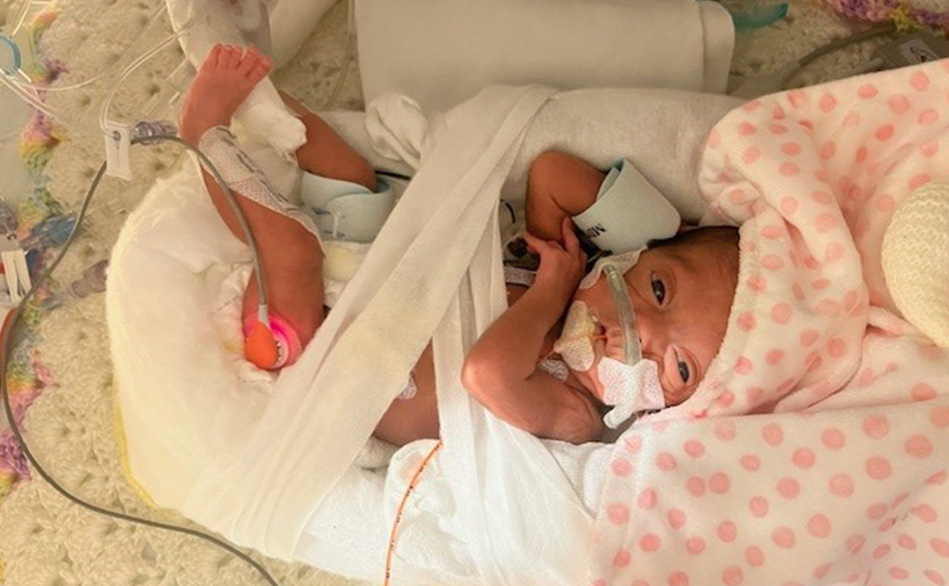Mia Roman’s extraordinary journey began unexpectedly early.
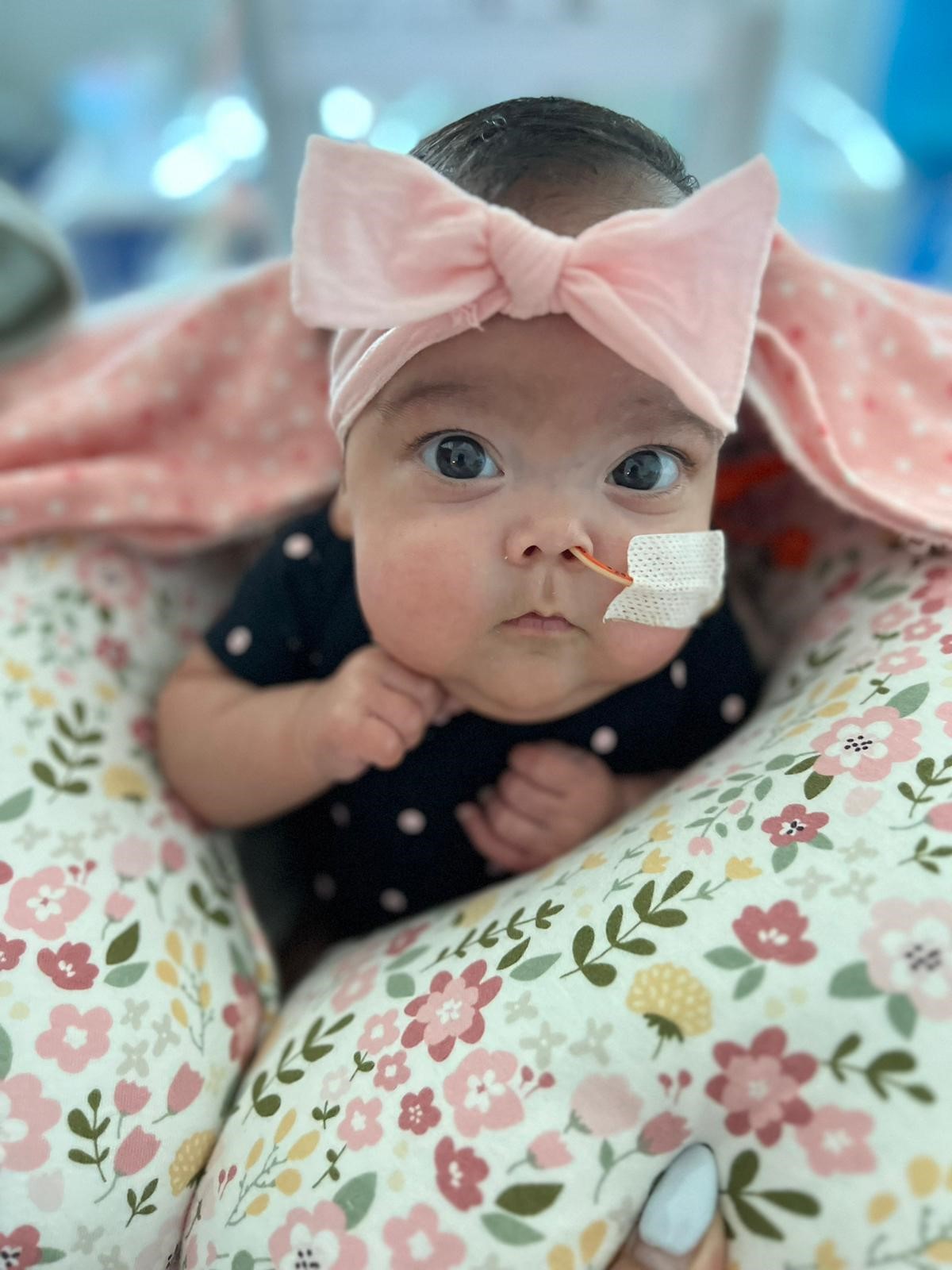 Born at just 25-and-a-half weeks, she weighed a mere 1 pound or just a loaf of bread. Her lungs were not ready for the outside world, and Mia’s care team at a Los Angeles hospital struggled to wean her off respiratory support despite many attempts. The team there recommended the standard treatment in this situation: a tracheostomy, which is a surgical procedure that creates an opening in the neck and into the windpipe to allow air to reach the lungs.
Born at just 25-and-a-half weeks, she weighed a mere 1 pound or just a loaf of bread. Her lungs were not ready for the outside world, and Mia’s care team at a Los Angeles hospital struggled to wean her off respiratory support despite many attempts. The team there recommended the standard treatment in this situation: a tracheostomy, which is a surgical procedure that creates an opening in the neck and into the windpipe to allow air to reach the lungs.
“It was a rollercoaster,” Mia’s mother, Perla, recalls. “As we were approaching her actual due date, the care team couldn’t understand why they couldn’t get her off respiratory support. The physicians at that hospital couldn’t see vocal cord movement and mentioned potential paralysis. While the care team recommended a tracheostomy, we wanted to explore every possible option for our daughter.”
Her parents knew she needed highly specialized care and researched for specialty support in southern California and beyond. Their quest led them to explore options beyond their local area, eventually finding hope in the expertise of Rady Children’s Hospital-San Diego and the skill of physicians at Rady Children’s, including Matthew Brigger, MD, MPH, chief of the Division of Otolaryngology and director of the Center for Pediatric Aerodigestive Disorders and Airway Surgery at Rady Children’s Hospital, and professor of Surgery at UC San Diego School of Medicine, and Denise Suttner, MD, clinical director of Neonatology and Director of ECMO at Rady Children’s, and professor of Pediatrics at UC San Diego.
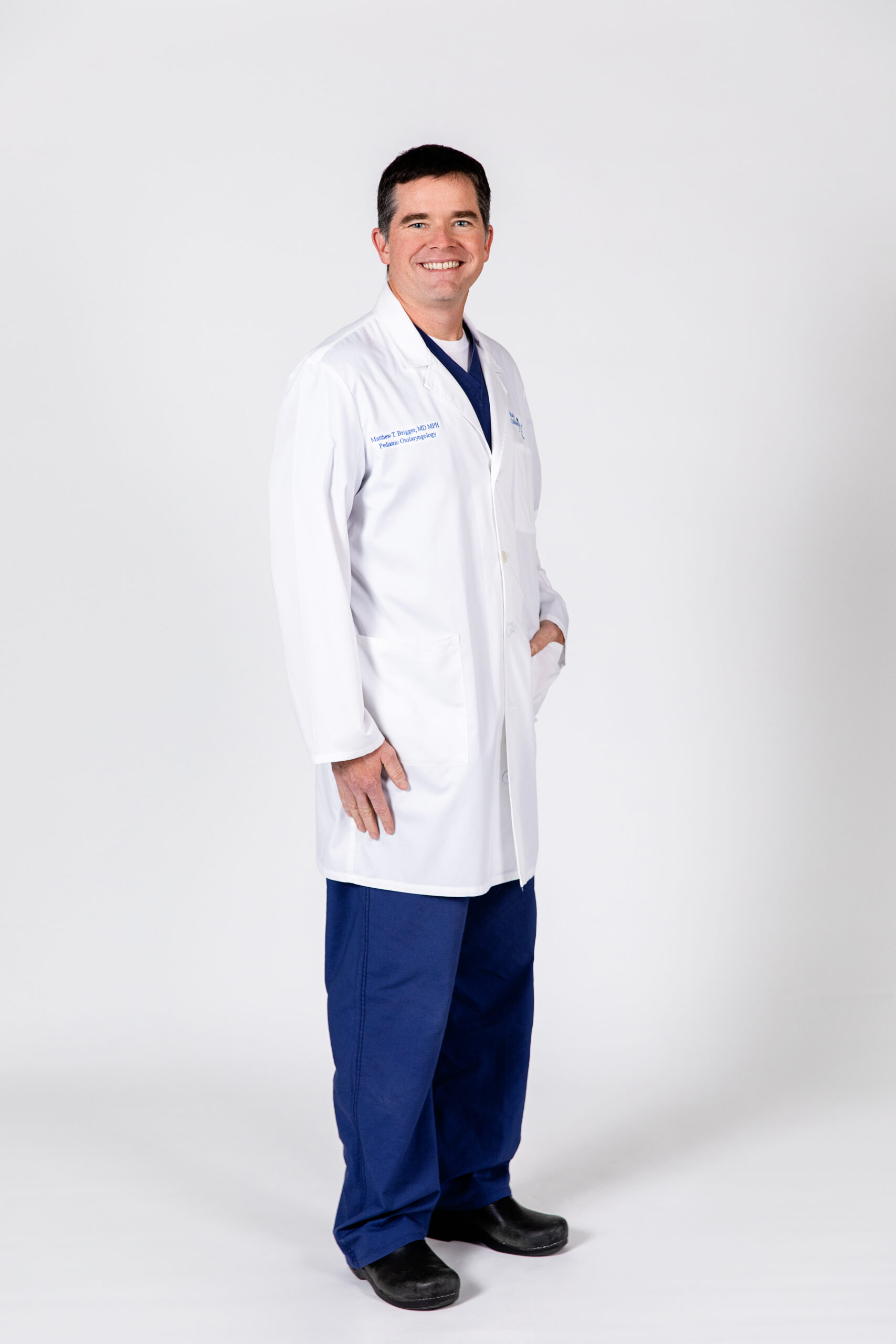
Matthew Brigger, MD, MPH
“We never imagined our journey would begin so early; we were desperate,” adds Perla. “Another parent had 100 percent recommended Dr. Brigger and the team at Rady Children’s. I called the Aerodigestive Clinic and within 30 minutes, Dr. Brigger called back. It felt like our doors were opening and that someone was listening to me. It was a sigh of relief. So, we took a leap of faith. In our heart we felt that we owed that to our daughter, to be her voice and find a team that could enable her to breathe on her own in the least invasive way possible.”
Mia was transferred from Los Angeles to San Diego. Upon her arrival at Rady Children’s, Mia faced significant challenges with her lungs and body still immature. She relied on a mechanical device for breathing and required intubation due to serious respiratory support needs. After stabilizing at Rady Children’s, Dr. Brigger recommended a procedure called an endoscopic anterior-posterior cricoid split (APCS), an endoscopic intervention used as an alternative to tracheostomy that only a very few surgeons in the U.S. can perform.
“Our aim was to alleviate airway obstruction and improve respiratory function without the need for a tracheostomy tube, so we moved forward with the APCS procedure to create a larger airway passage to help with breathing,” says Dr. Brigger. “The endoscopic procedure allowed the team to avoid a tracheostomy and manage her airway without any incisions on her neck. This is a complicated procedure, but working with Mia and her family has been both inspiring and humbling. Despite the challenges she faced from the very start, Mia’s resilience and determination have been truly remarkable.”
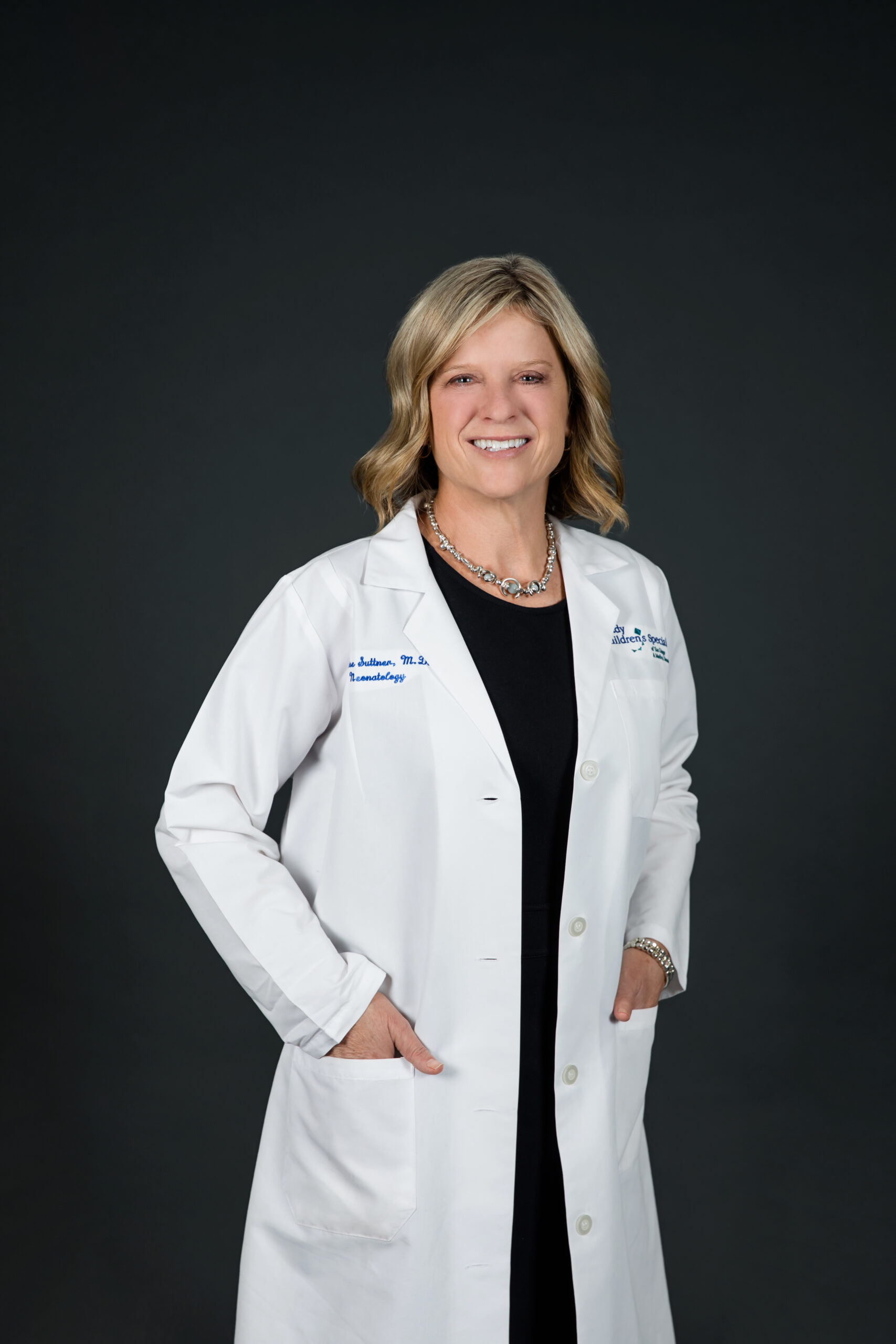
Denise Suttner, MD
A series of surgeries and interventions followed, each presenting its own set of obstacles, including the uncertainties of vocal cord paralysis to the complexities of airway management, but ultimately, the surgeries were successful.
As she recovered and received treatment from the Aerodigestive team, Mia was also cared for at Rady Children’s NICU or Neonatal Intensive Care Unit. The NICU is a specialized hospital unit at Rady Children’s that provides intensive medical care for newborn infants, particularly those born prematurely, with low birth weight, or requiring specialized treatment. Ranked among the top programs in the nation, Rady Children’s NICU provides level 4 care, the highest designation available from the American Academy of Pediatrics. Level 4 NICUs are equipped to handle the most complex medical conditions, like Mia’s, and offer a full range of pediatric medical subspecialties, including pediatric surgery, cardiology, neurology, and more. The units have highly specialized medical equipment, advanced technology, and a multidisciplinary team of neonatologists, pediatricians, nurses, respiratory therapists, and other specialists available 24/7 to provide immediate and intensive care to newborns with the most severe health challenges.
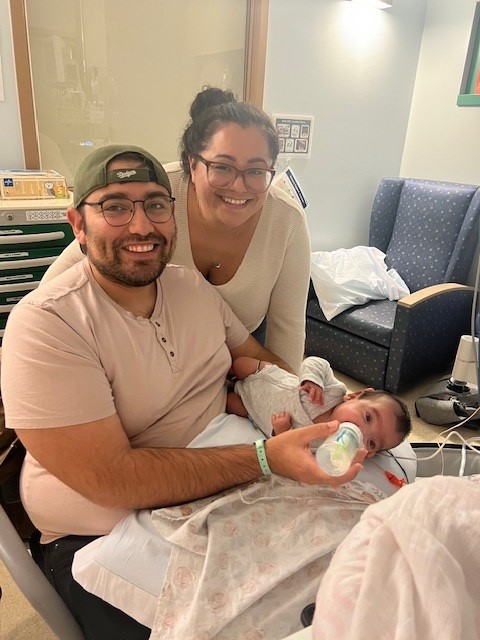 Denise Suttner, MD, and her team cared for Mia in the NICU and worked with her family to overcome challenges, like feeding and breathing on her own. Her parents worked with a multidisciplinary team to support Mia through many ups and downs and even spent a month taking 12-hour shifts where they would help Mia drink from a bottle 24/7. It was hard, but it worked. Once Mia was able to drink a bottle 70 percent by mouth, Dr. Suttner took a leap of faith and let Mia try feeding on her own.
Denise Suttner, MD, and her team cared for Mia in the NICU and worked with her family to overcome challenges, like feeding and breathing on her own. Her parents worked with a multidisciplinary team to support Mia through many ups and downs and even spent a month taking 12-hour shifts where they would help Mia drink from a bottle 24/7. It was hard, but it worked. Once Mia was able to drink a bottle 70 percent by mouth, Dr. Suttner took a leap of faith and let Mia try feeding on her own.
“She did it. Despite facing numerous obstacles, Mia showed remarkable resilience,” adds Dr. Suttner. “Her journey is a testament to the incredible strength of the human spirit and of her parents. Mia is thriving and has a bright and hopeful future. After 185 days in the hospital, Mia was ready to go home with her family.”
Today, Mia is a little over 1 year old. She loves crawling, eating yogurt and laughing up a storm, says her mother. For her birthday, her family took her to Disneyland for the first time and blew out candles on her birthday cake at home. 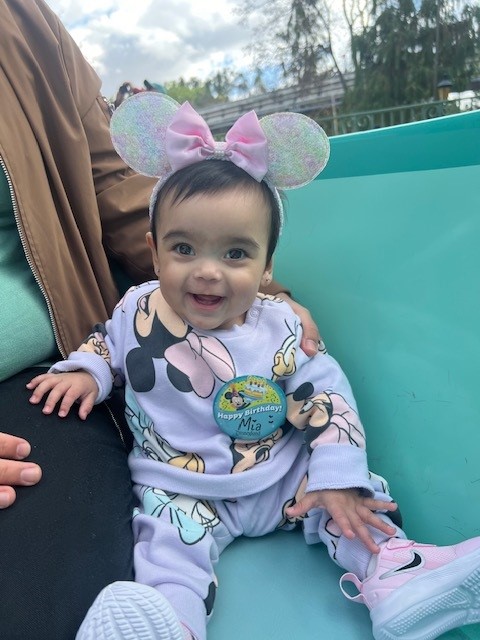
“My husband and family will forever be thankful for the compassionate care team at Rady Children’s,” Perla says. “A heartfelt thank you to Dr. Brigger, Dr. Suttner, and the entire team who, with countless uncertainties, took the time to review our daughter’s medical records and truly listen to her story. Feeling heard and valued as parents, not just patients, made all the difference. They provided us with the assurance that we could trust in their expertise. The Rady Children’s team gave our daughter a shot at a better quality of life.”
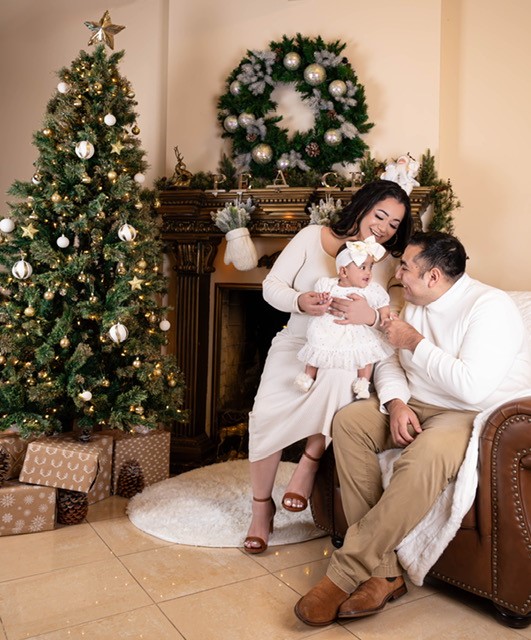 Adds Perla, “I want other parents to know that we’ve been in their shoes. We know how you are feeling. There are so many unknowns. I want to empower them to have a voice and to ask questions of your care team. Ask if you don’t understand. I hope that our journey serves as a beacon of hope for families facing similar challenges, a reminder that with perseverance and unwavering support, anything is possible.”
Adds Perla, “I want other parents to know that we’ve been in their shoes. We know how you are feeling. There are so many unknowns. I want to empower them to have a voice and to ask questions of your care team. Ask if you don’t understand. I hope that our journey serves as a beacon of hope for families facing similar challenges, a reminder that with perseverance and unwavering support, anything is possible.”
